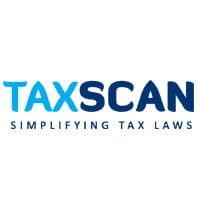Taxable Contract Income is higher than fixed price contract value u/S 97 of Income Tax Act: ITAT deletes Income Tax Addition [Read Order]
ITAT decided to delete the income tax addition, as it found that the taxable contract income exceeded the fixed price contract value under Section 97 of the Income Tax Act, 1961
![Taxable Contract Income is higher than fixed price contract value u/S 97 of Income Tax Act: ITAT deletes Income Tax Addition [Read Order] Taxable Contract Income is higher than fixed price contract value u/S 97 of Income Tax Act: ITAT deletes Income Tax Addition [Read Order]](https://www.taxscan.in/wp-content/uploads/2024/01/ITAT-Income-Tax-Act-ITAT-deletes-Income-Tax-Addition-TAXSCAN.jpg)
The Chennai bench of the the Income Tax Appellate Tribunal ( ITAT ) decided to delete the income tax addition, as it found that the taxable contract income exceeded the fixed price contract value under Section 97 of the Income Tax Act,1961
The counsel for the appellant Sachit Jolly arguments were directed towards various documents and details presented in the records. The counsel asserted that the assessee, in adherence to the relevant Accounting Standard, had appropriately accounted for the revenues generated from fixed-price contracts. It was emphasized that the assessee had diligently reported the contract revenues for taxation purposes throughout the duration of the contract.
The counsel for the appellant contended that sustaining the contested additions would lead to a scenario of double taxation. This, in turn, would result in the inclusion of contract revenues in the tax assessment that exceeds the originally agreed-upon revenues stipulated in the contract. The potential consequence highlighted by the Ld. AR underscored the importance of ensuring that the tax liability accurately reflects the agreed contractual terms and does not inadvertently result in an undue financial burden on the assessee.
The counsel for the Respondent Nilay Baran Som endorsed the methodologies employed by the Learned Assessing Officer ( AO ). The counsel asserted that the assessment procedures followed by the AO aligns with the application submitted by the assessee under section 197 of the Income Tax Act, 1961
The bench observed that in the application filed under section 197 of the Income Tax Act, 1961, the assessee presented projections of contract revenue. However, it is crucial to note that these estimates should not be misconstrued as the actual turnover of the assessee, especially when there is no identified discrepancy in the books of accounts flagged by the Learned Assessing Officer (Ld. AO).
The divergence between the estimated revenue and the actual revenue can be elucidated by the extension of the project duration into the financial year 2020-21, surpassing the initially agreed-upon contract period. The revenue forecasts submitted during the Section 197 of the Income Tax Act, 1961, proceedings were grounded in estimated work completion, whereas the financial statements reflected revenue based on the contractor's certification derived from a survey of the completed work.
Consequently, it becomes imperative to acknowledge the financial results derived from the certified work rather than relying solely on the projections. The inability of the assessee to complete the project within the initially estimated timeframe led to the recognition of revenue only for the completed and certified portion of the work. This approach, in the considered opinion, aligns with the correct methodology in the given circumstances.
The two member bench of the tribunal comprising V. Durga Rao ( Judicial member) and Manoj Kumar Agarwal ( Accountant member) observed that a crucial aspect to consider was that the total contract revenue had been dutifully subjected to taxation throughout the entire contract period, spanning from the fiscal years 2012-13 to 2022-23. This was substantiated by the comprehensive details of invoices presented in the records.
This information reinforced the argument put forth by the Authorized Representative ( AR) that there was no oversight or omission in accounting for contract revenue. Imposing additional taxes in the current year would, in essence, have led to the taxation of contract revenues surpassing the fixed price contract value earmarked for the assessee over the entire contractual duration. Such a course of action could not be deemed justifiable under any circumstances.
Therefore considering the facts and circumstances of the case, the bench holds that the impugned additions are unsustainable. The corresponding grounds raised by the assessee stand allowed. The stay application has been rendered infructuous.
The appeal stands partly allowed. The stay application was dismissed as infructuous.
To Read the full text of the Order CLICK HERE
Support our journalism by subscribing to Taxscan premium. Follow us on Telegram for quick updates
ST Engineering Electronics Ltd. vs ACIT , 2024 TAXSCAN (ITAT) 197 , Sachit Jolly , Nilay Baran Som

